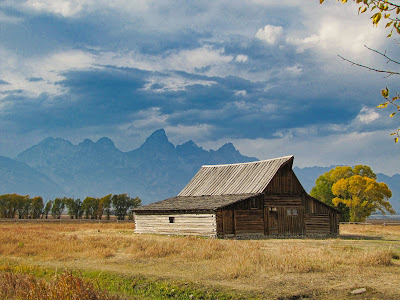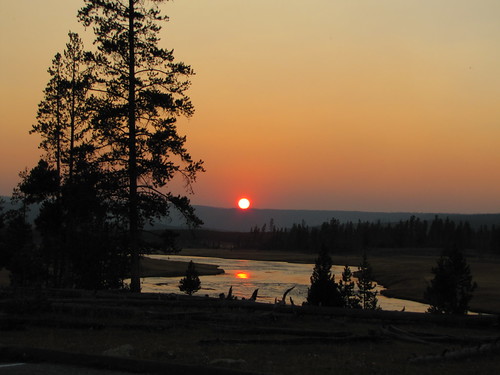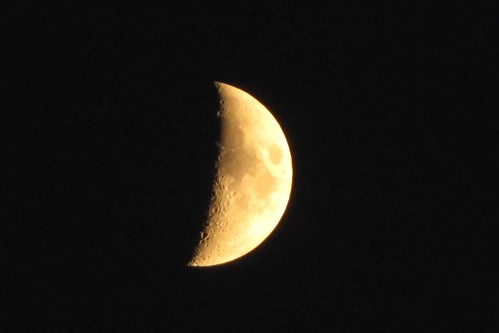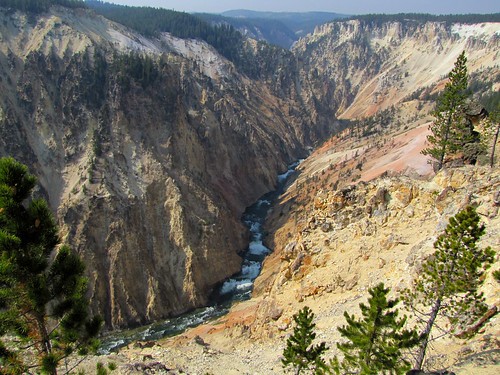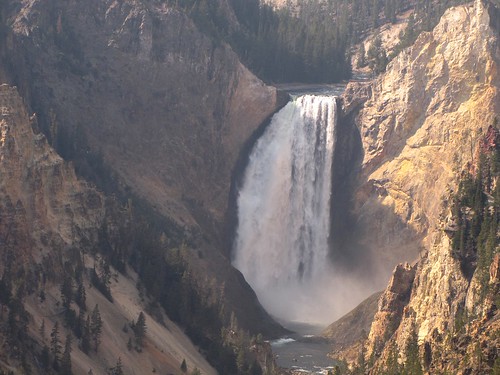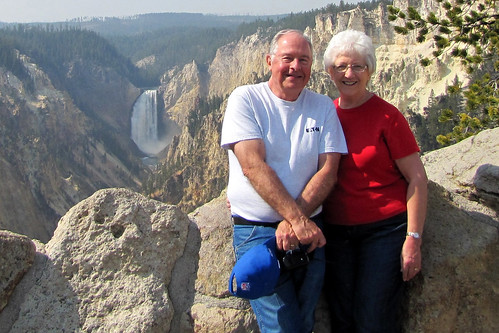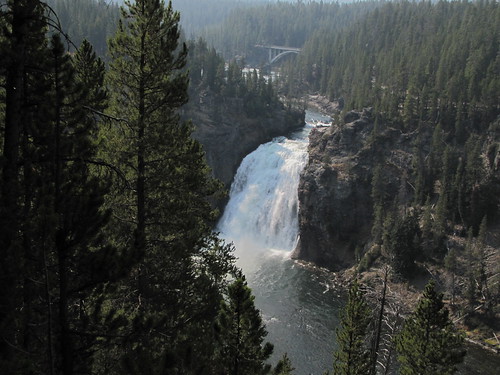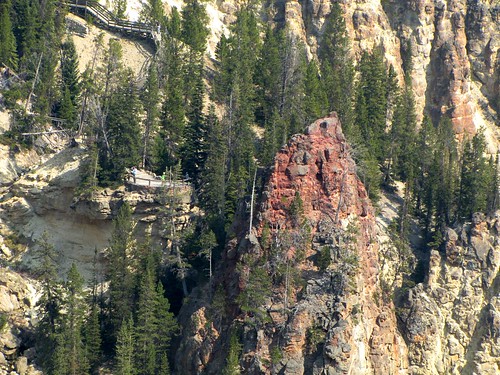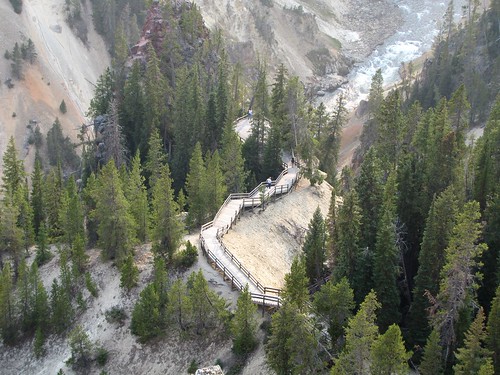After our hike to Fairy Falls on September 21, we went looking for elk. They're much harder to find in Yellowstone these days than they were 10 or 12 years ago. We used to see them everywhere in the park, even during daylight hours. It seems they don't emerge from the cover of the trees now until dusk. It may be that the reintroduction of wolves into the park's ecosystem has reduced their numbers.
Whatever the reason, by the time we located the elk, it was too dark for my camera to capture any photos of them.
I did, however, capture this lovely sunset.
And this equally lovely moon.
The following day was spent at the Grand Canyon of the Yellowstone. What a beautiful place!
Yellowstone Canyon from the Grand View Lookout Point on the North Rim
Yellowstone Canyon and Lower Falls from Artist Point on the South Rim
A closer look at Lower Falls from Artist Point
The couple that took our picture at Artist Point live about 30 miles from our home.
Upper Falls
After viewing Upper Falls, Doug wanted to walk down to the beginning of Uncle Tom's Trail, which is essentially a staircase of 328 steel grate steps, descending 500 feet down the side of the cliff to a view of the base of Lower Falls. We had just gotten a new high-definition video camera, and Doug wanted to get some video of that famous staircase.
So we started down the steep switchback trail which would bring us to the top of Uncle Tom's Trail in about a half-mile. The elevation was about 8,000 feet; and we've already established that it's hard for us flatlanders, who live at or near sea level, to breathe at that height when standing still, let alone when hiking.
We met another couple who were also curious to see Uncle Tom's Trail, and the four of us walked together down the steep half-mile trail leading to the staircase. As we walked, we talked and found ourselves really enjoying our new friends, who were from Nevada. I didn't get their names, which I have regretted ever since.
As we neared the last hundred yards or so before reaching the staircase down into the canyon, we could see that the trail was increasing in steepness. Since we were within sight of Doug's goal, and since our return was going to be all uphill, I told Doug I'd just wait there while he went and got his pictures. He suggested that I go on back up to the parking area with the Nevada couple, who had also decided not to go any further.
The Nevada couple seemed concerned about me as I came gasping up to where they waited, and they insisted that I walk with them. I knew I'd be slowing them down since they live at an elevation of 7,800 feet and weren't having to deal with the whole breathing issue. But they insisted. They walked very slowly and stopped often for me to catch my breath.
When we reached the parking lot and they realized that Doug had the key to our car, they insisted that I accept a Gatorade from them, as well as a stem of grapes. Then they went on their way, and I sat down in the shade to wait for Doug. When he wasn't back within 10 minutes or so, I knew he had decided to go all the way to the bottom of Uncle Tom's Trail.
He rejoined me in about a half-hour. He said he had started down, just to get some pictures of the trail. Before he knew it, some old man coming up the trail told him he had only about 87 steps to go and that he should keep going. So Doug did. I can't believe he did that whole trail in only a half-hour. And not a single snapshot to show for it.
Later that same day, if you can believe it, Doug decided to take another strenuous hike, this time to Red Rock Point, which is across the canyon from Uncle Tom's Trail.
Red Rock Point (You can see the trail and the viewing platform to the left.)
That tiny speck nearing the bottom of the stairs is Doug



























